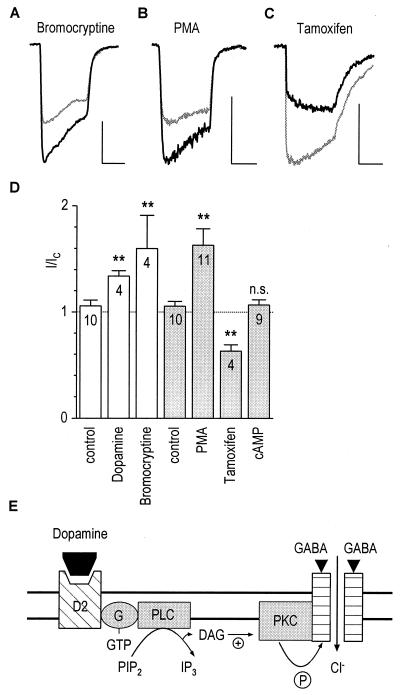Figure 3.
Dopamine D2 receptors mediate up-modulation of GABAA receptors in M/T cells via phosphorylation by PKC. (A) Bromocryptine (50 μM; see Fig. 1 for protocol) increased the control GABA response (light trace) to 150% (dark trace). Horizontal and vertical scales in this figure correspond to 5 s and 500 pA, respectively. (B) Intracellular application of 100 nM PMA also increased the GABA-induced current (I/IC = 1.53). (C) Decrease of GABA response on including 50 μM tamoxifen in the pipette (I/IC = 0.57). (D) Modulatory effects of extra- and intracellular drugs (open and shaded columns, respectively). The dashed line indicates the no-effect level. ∗∗, P ≤ 0.01; ∗, P ≤ 0.05; n cells. (E) Model illustrating the sequence of events for the increase of GABA-induced currents: Binding of dopamine to D2 receptors leads to activation of phospholipase C (PLC), production of diacylglycerol (DAG), and eventually phosphorylation of GABAA receptors by PKC.

